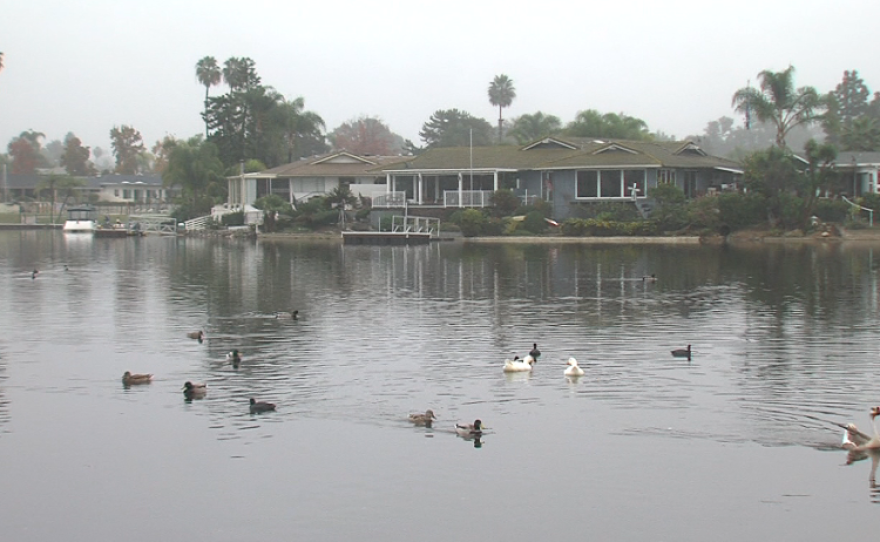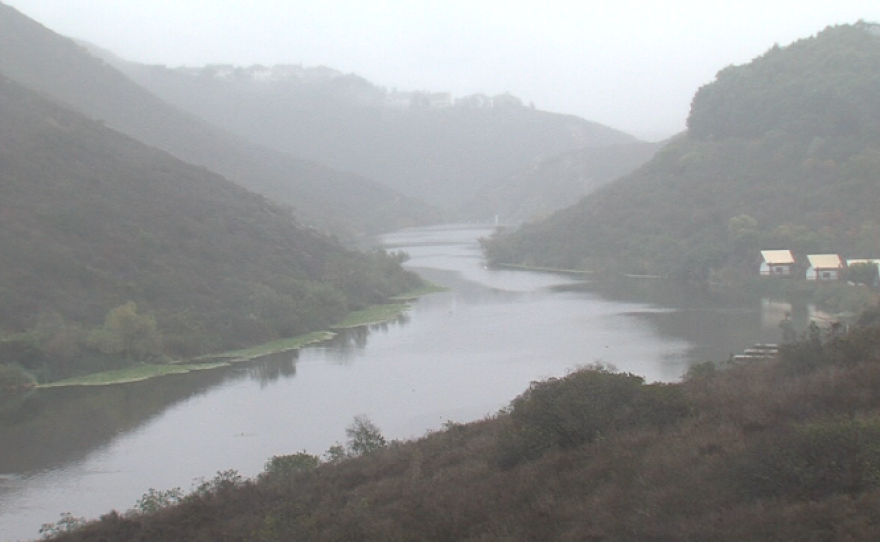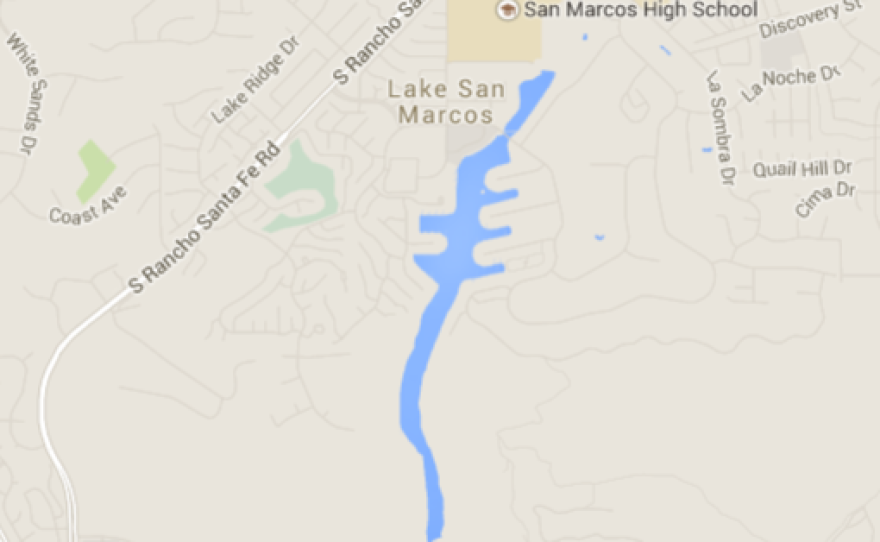More than 4,000 people live around Lake San Marcos in North County, many of them retirees drawn to the tranquil spot for its peace and quiet.
Warren Lydecker and his wife, Dotti, moved here 15 years ago.
“By and large, everybody just loves it, “ he said, “ because it’s quiet, it’s residential, it’s out of the way and it’s pretty.”
But the Lydeckers know there is trouble under the tranquil surface of the lake.
“The lake is a dammed up canyon,” Warren Lydecker said. “It’s a long, narrow trough and it has the water stagnant for much of the year. Any lake that has the water coming in and out - it’s a good lake. When you have the water impounded behind a dam, you got a problem. And that’s what we have.”
Lake San Marcos is on California’s list of polluted water bodies, and the San Diego Regional Water Quality Control Board has the authority to enforce clean up. The board’s Laurie Walsh has heard complaints for years.
“There were large algae blooms and fish kills,” she said. “The lake would basically turn over and nuisance odors would be present.”
Birds still crowd the lake and fishermen still catch fish, but there is some doubt about how safe it is to swim in the lake. And drinking the water is discouraged.
Identifying where the pollution is coming from is no small matter since an enormous watershed empties into the lake from as far away as Escondido.
Numerous agencies are involved in the investigation, including the City of San Marcos, the San Marcos School District, the City of Escondido and Caltrans. There are also private companies like the Hollandia Dairy that closed its farm in San Marcos a decade ago but could still be liable for the runoff, and CDC, the company that owns the lake.
Walsh convened a public workshop this week to let the consultants employed by both public and private agencies present their findings from two years of collecting data on the source of the pollution. Residents showed up hoping to hear about solutions, but most of the discussion focused on data and monitoring.
The presenters spent a couple of hours showing charts of data collected from sampling points around the lake, and from the lake bed.
They pointed out that the lack of rain has slowed down the research. In fact this week’s rain was a boon for the water monitoring teams, who worked overnight shifts to catch the latest runoff from the downpour.

Ashley Tuggle, an ecologist working for the owner of the lake, CDC, was working with a monitor employed by a consortium of public agencies. They were out in their rain gear, collecting samples from the San Marcos Creek that empties into the lake.
“We’ve been working since 6 a.m. yesterday,” she said. “We’ve had crews running around the clock. We want to see what’s going on with that, because that represents a major pollutant into the lake.”
Pino Vitti bought CDC, the company that owns San Marcos Lake, two years ago out of bankruptcy. He said he is committed to finding a way to clean it up.
“What I would prefer are cost effective measures, obviously,” he said. “But also measures that preserve the environment and the lake and the beauty for its residents.”
But Vitti has not joined the group of public agencies working together on a legal settlement to get the lake cleaned up. He has invested in rebuilding some of the disintegrating docks around the lake and has plans for new recreational activities.
Many of the residents were disappointed there was little talk of solutions at the workshop. Walsh told them the last few years of collaborative data collection should yield some solutions later next year.
“It could be some sort of aeration, it could be dredging, it could be restoration or rehabilitation of San Marcos Creek,” she said.
Warren Lydecker said he spoke with an ecologist who suggested one option would be to drain the lake and refill it with fresh water. But that option would be highly unpopular with fishermen.

“People are afraid of change,“ he said. Most of the options will involve change of some sort.
The goal of the Water Quality Control Board, says Walsh, is to avoid prolonging lawsuits over the lake, and instead focus on fixing it.
“The water board has the authority to issue board orders and compel people to take action to improve water quality,“ she said. "This particular project is being done voluntarily.”
Walsh hopes the spirit of collaboration will continue through the next step — establishing who is responsible for the pollution and, perhaps most critically, who will contribute to the clean up.







